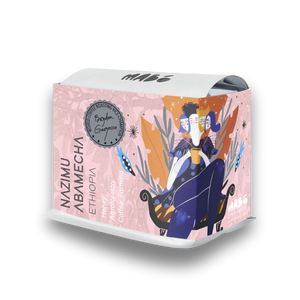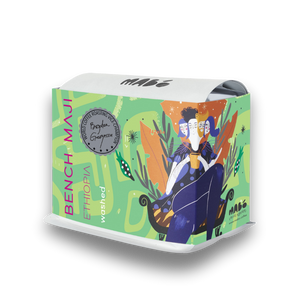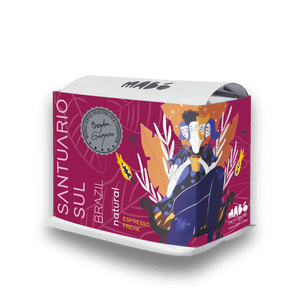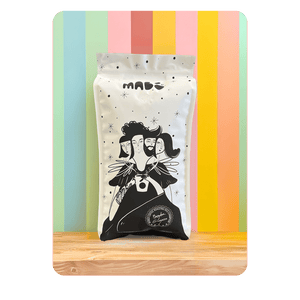
NAZIMU ABAMECHA, Ethiopia (Honey) Specialty Coffee
Sale price
77,00 lei
Tasting notes
By default, the coffee in the bag is beans. Select if you want us to grind it for you:
Loyalty points
What else are we putting in the basket today?
| Origin | Ethiopia |
| Region | Gomma Woreda, Jimma |
| Farm | Nazimu Abamecha – Abachabsa |
| Processing | Honey |
| Arabica Variety | Heirloom |
| Altitude | 1850 – 2100m |
| Roast Profile | ["Omni"] |
| Resting Period | Filter 7 days | Espresso 14 days |
Open for more details
Nazimu Abamecha is a young man from Botto, a village where his family has been producing coffee for generations. He inherited his father's farm and hopes that one of his children will one day manage the land like him here. Nazimu, a forty-year-old man full of energy, is concerned with revealing the best coffees of Jimma. Ten years ago, he created the Duromina cooperative to ensure better recognition of coffee production in the region. He was the manager of this cooperative for 8 years. So his knowledge of the product, trading and his dedication to this work are enormous. But aware that an increase in the value of coffee is linked to better traceability, he decided, 2 years ago, to sell his coffee independently, to ensure a higher quality of his batches.

Nazimu’s farm is located south of Jimma, in Gomma District, in Botto Village. Nazimu’s parents used to farm this land before him and also produced coffee on it. The farm covers 8 hectares and is immersed in a beautiful indigenous coffee forest. This complex agroforestry system ensures the production of high-quality coffee, where the cherries ripen slowly under the shade of the dense tree. Nazimu works to keep this ancient farming system alive by maintaining the forest. He also owns a few animals that help him work his maize fields, a crop that helps supplement his income. Nazimu manages his coffee trees with great care, dividing them into different plots on his farm according to their age. His oldest plants here are 32 years old, the youngest 4 years old.

Honey Fermentation
The relatively recent emergence of a processing style known as honey has become prominent in the coffee-producing countries of Central America, perhaps most notably in Costa Rica. This process preserves some of the desirable characteristics of a fully natural fermented coffee (heavy body, sweet fruitiness with lower acidity, deep chocolate notes), while speeding up the drying process considerably and reducing some of the risks of spoilage, mold, and other defects that can occur with a fully intact coffee cherry on the terraces or drying tables. The most obvious benefit of the Honey process over Naturale is the speed and efficiency of the drying process, as well as the different flavor characteristics that can emerge through fermentation and exposure. On the other hand, exposed fruit material poses more risk to producers, as it requires more labor to dry to prevent impurities from forming. These coffees will also often have an uneven or inconsistent appearance in their green forms, which can be unappealing to roasters who are used to the more uniform cleanliness of a washed coffee.

Mixed Heirloom Variety
The name Ethiopian Heirloom is used to describe indigenous heirloom varieties that result from crossbreeding between species and cultivars, rather than originating from a specific cultivar. Local varieties in Ethiopia are called "Ethiopian Heirloom" or Ethiopian heritage. Most heirloom coffees are natural descendants of the Typica or Bourbon varieties of the Coffea Arabica species. It is estimated that Ethiopia is home to several thousand different varieties of coffee.





















